Hello! Annual spring exhibition is now being held at our museum. This year’s theme is “The Flourishing of Cherry Blossom Trees in the Edo Period”. Please check out the detail in our website!
This time, since it is the best season for cherry blossom viewing now, we would like to introduce you two varieties of cherry blossom trees on the premises of our museum.
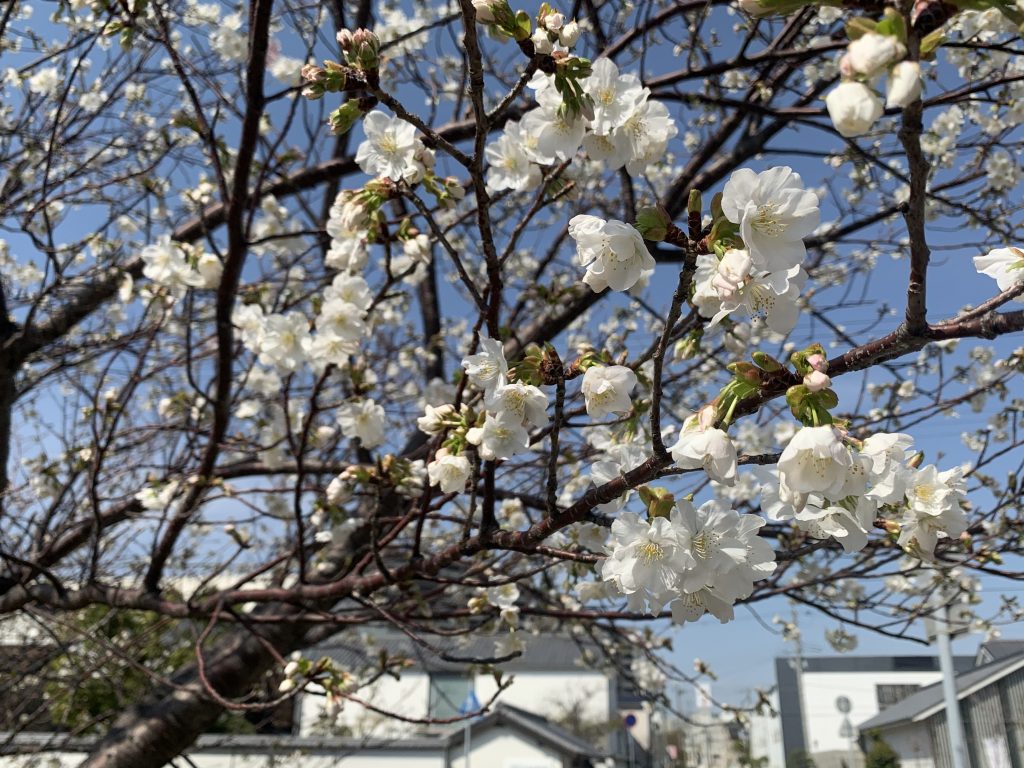
The first variety of cherry blossom trees at our museum is Nishinomiya Gongendaira Cherry Blossom Trees planted at the green space beside the museum’s parking lot. As seen from its name, this variety is originated in Nishinomiya, and is actually related to Sasabe Shintaro. In Sasabe’s autobiography, he wrote about the pure breed of the Nishinomiya Gongendaira Cherry – the row of Gongendaira cherry blossom trees at Shinto shrine Gongen jinja near Kii Tonda station (in Wakayama Pref). Sasabe described that those trees had no external wounds nor pest damage, and the well-grown trunks were from 1.8 to 3.0 meter thick respectively. He highly valued those trees and when someone asked him of the best wild cherry blossom trees, he immediately answered that the Kii Gongendaira cherry blossom trees were the best.
After the WWⅡ, however, many of those trees were cut down because people thought cherry blossom trees do not bear fruits and were unproductive. Sasabe was disappointed to hear the news as he knew no cherry blossom trees could replace those trees. Fortunately he was able to obtain the seeds from one of his friends who harvested the seeds from the uncut trees. Later the seedlings grown from the seeds by Sasabe’s friend were donated to Nishinomiya City. The seedlings were then bred using plant biotechnology at a facility owned by the city and planted in various places within the city including our museum site. The best viewing season is early April, but the trees may be in full bloom earlier this year.
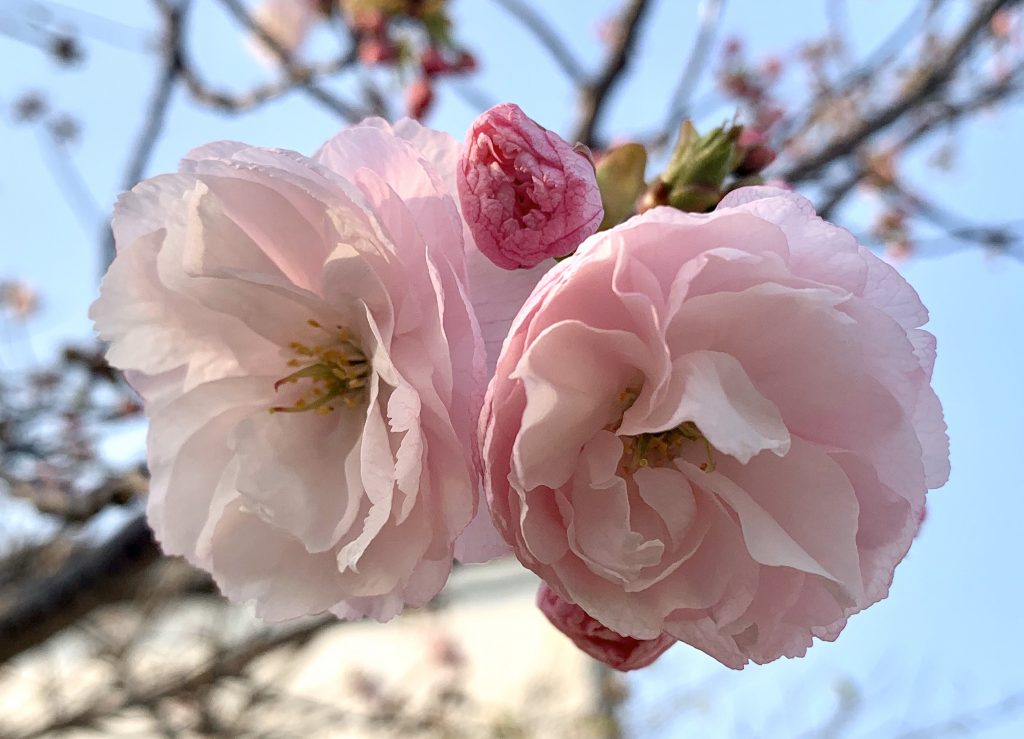
The second variety is Fugenzo Cherry Blossom Tree that is grown beside the reception building of Sakagura-kan. The unique thing about the flowers are the two green leafed-stamens in the center of the flowers. The name originated from Samantabhadra (=Fugen Bosatsu in Japanese) on an elephant, as the two tusks of the elephant or its nose look like the two stamens of the flowers.
Hirose Kain (1772-1849), one of the painters of the Mikuma School which exclusively painted cherry blossom trees, had a different opinion about the Fugenzo Cherry Blossoms. He wrote his perspective about the flowers in a collection of essay “Kasshawa”. He insisted that in a historical book, there was a writing that Fugenzo Cherry Blossoms used to have six stamens in each flower and the elephant which Samantabhadra had ridden also had six tusks. Hirose Kain is said to have found the flowers with six stamens, and those flowers are seen in his painting titled “Folding Screen with Thirty-six Varieties of Cherry Blossoms on Shikishi and Tanzaku Paper”. The work will be exhibited from April 21 to June 6.
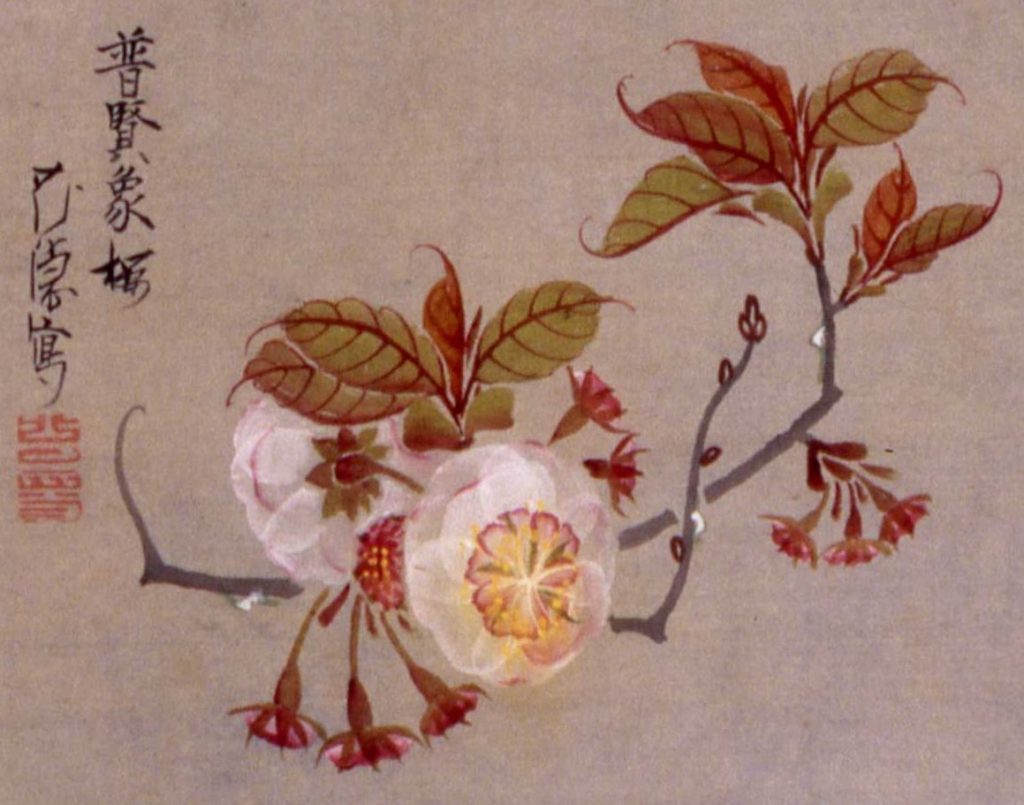
Now is the only season you can enjoy the real cherry blossoms and the works of cherry blossoms at our museum at the same time, so please visit our museum!


.jpg)
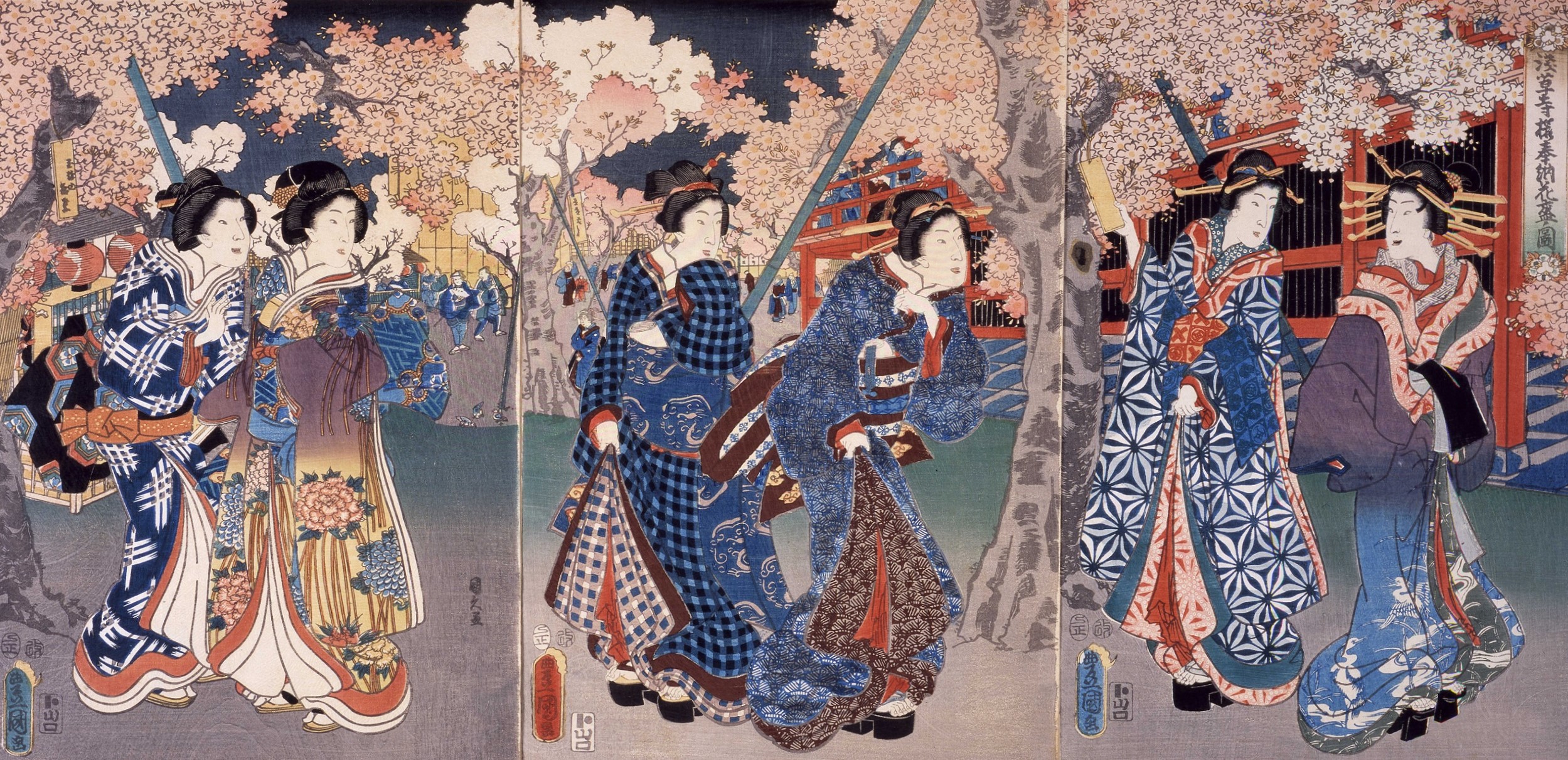
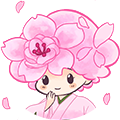
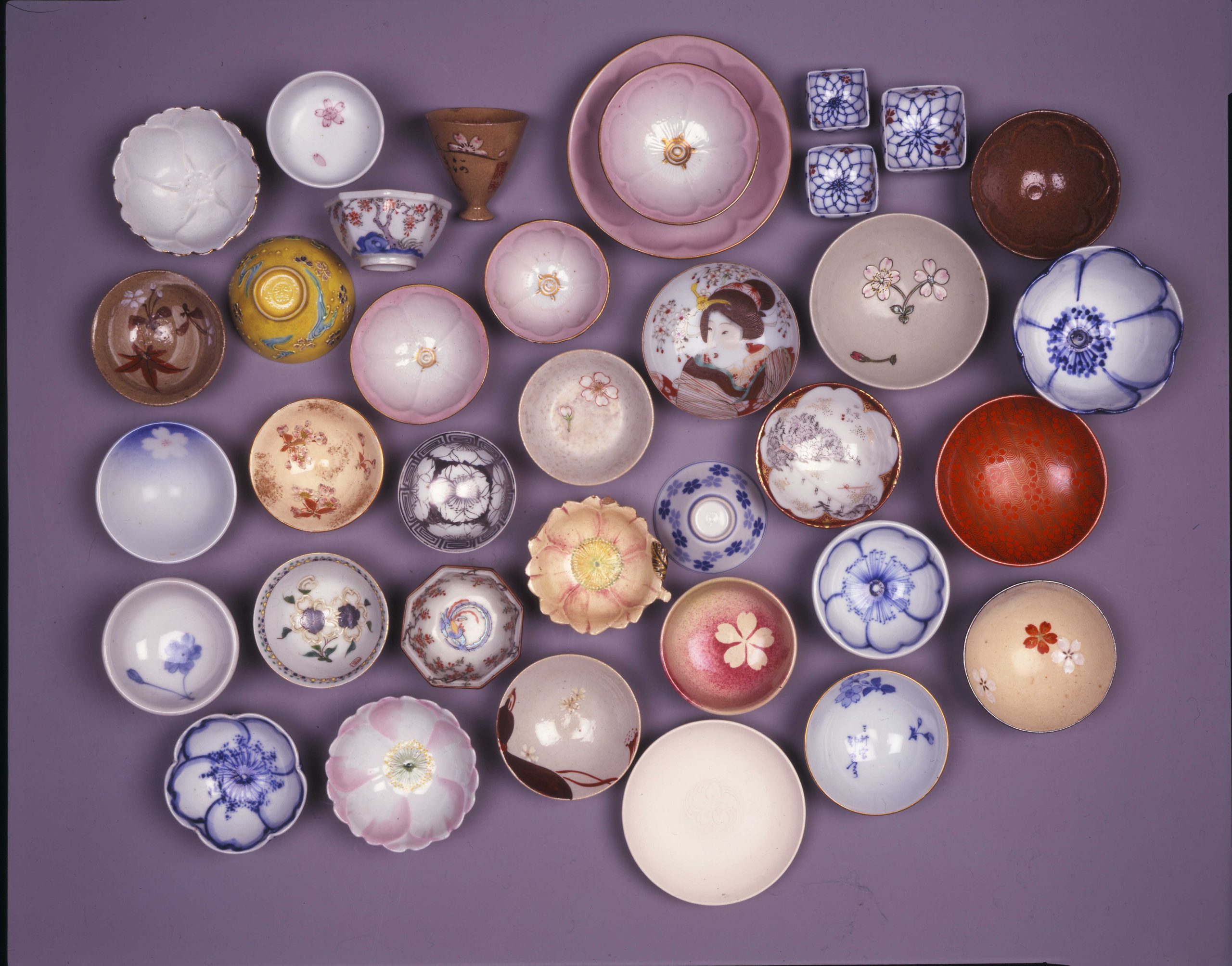
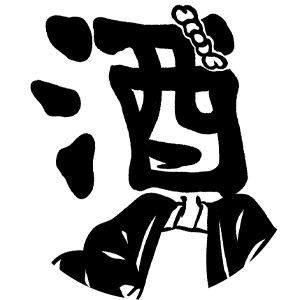
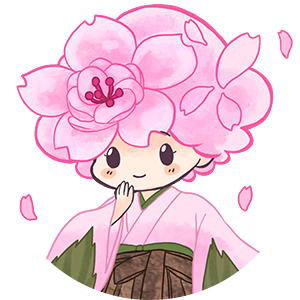
I can feel the painters’ passion through their depictions of cherry blossom trees!